8.6 Human Influences
Mitigation and Modification
There are various modifications that we make to influence beach processes for our purposes. Sometimes these changes are effective and may appear to be beneficial, although in most cases, there are unintended negative consequences that we do not recognize until much later. (4)
Seawalls
Seawalls help limit erosion and are enjoyable amenities for the public, but they have geological and ecological costs. When a shoreline is “hardened” in this way, crucial marine habitats are lost, and sediment production is reduced, which can affect beaches elsewhere. Seawalls also affect the behavior of waves and longshore currents, sometimes with negative results. (1)
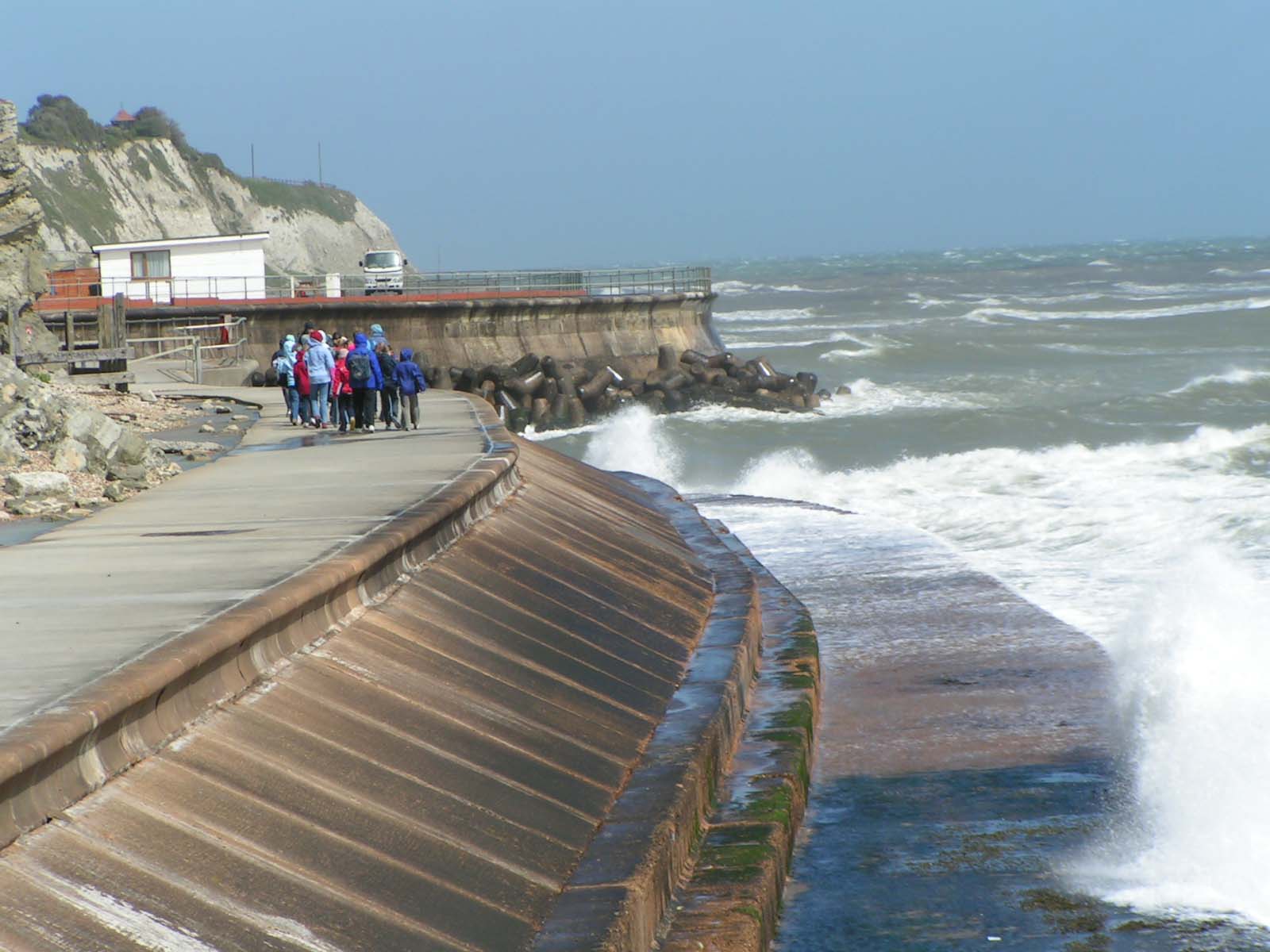
Groins and Jetties
Groins have an effect similar to that of breakwaters, although groins are constructed perpendicular to the beach, and they trap sediment by slowing the longshore current. Most of the sediment that forms beaches along our coasts comes from rivers, so if we want to take care of the beaches, we have to take care of rivers. When a river is dammed, its sediment load is deposited in the resulting reservoir, and for the century or two, while the reservoir is filling up, that sediment cannot get to the sea. During that time, beaches (including spits, baymouth bars, and tombolos) within tens of kilometers of the river’s mouth (or more in some cases) are at risk of erosion. (4)
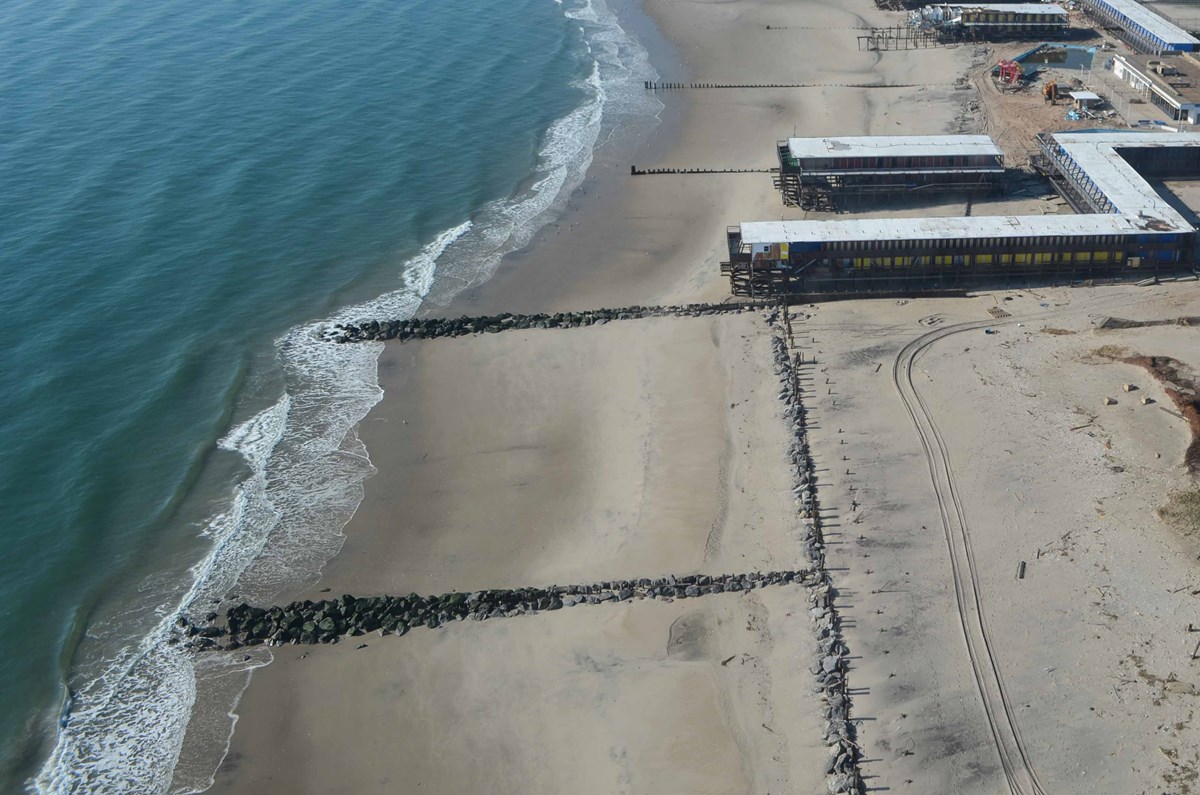
Coasts are prime real estate land that attracts the development of beach houses, condominiums, and hotels. This kind of interest and investment leads to ongoing efforts to manage the natural processes in coastal areas. Humans who find longshore drift is removing sand from their beaches often use groins in an attempt to retain it. (1)
Similar but smaller than jetties, groins are bits of wood or concrete built across the beach perpendicular to the shoreline at the downstream end of one’s property. Unlike jetties, they are used to preserve sand on a beach, rather than to divert it from an area. Sand erodes on the downstream side of the groin and collects against the upstream side. Every groin thus creates a need for another one downstream. The series of groins along a beach develops a scalloped appearance for the shoreline. (8)
Breakwaters
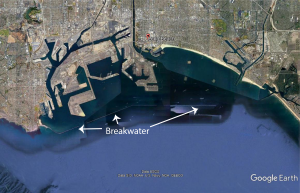
Another approach to reduce erosion or provide protected areas for boat anchoring is the construction of a breakwater, an offshore structure against which the waves break, leaving calmer waters behind it. Unfortunately, this means that waves can no longer reach the beach to keep the longshore drift of sand moving. The drift is interrupted, the sand is deposited in the quieter water, and the shoreline builds out, forming a tombolo behind the breakwater, eventually covering the structure with sand, rendering it obsolete. (1) During WWII, the U.S. Navy built a series of breakwaters just offshore of Long Beach, California, in order to maintain a deep port and serve as a deterrent to enemy submarines (Figure 8.6.3). While it served its purpose, it changed the dynamics of the beach itself, halting wave formation and destroying habitat. Additionally, trash and debris from the Los Angeles River builds up in the marina and cannot escape.
Beach Replenishment
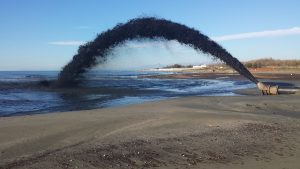
Sand for longshore drift and beaches comes from rivers flowing to the oceans from inland areas. Beaches may become starved of sand if sediment carried by streams and rivers is trapped behind dams. To mitigate, beach replenishment may be employed where sand is hauled from other areas by trucks or barges and dumped on the depleted beach. Unfortunately, this can disrupt the ecosystem that exists along the shoreline by exposing native creatures to foreign sandy material and foreign microorganisms and can even bring in foreign objects that impact humans on replenished beaches. Visitors to one replenished east coast beach found munitions and metal shards in the sand which had been brought from abandoned test ranges from which the sand had been dredged. (1)
Showcase your understanding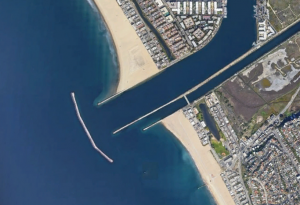
Coral Reefs and Bleaching
Anthropomorphic climate change has caused the oceans to change in temperature at an alarming rate. One of the side effects of this is coral bleaching. When corals are stressed by changes in conditions, they expel the symbiotic algae living in their tissues, causing them to turn completely white. While the coral is not yet dead, it is a sign of stress, and can lead to mass mortality.
Plastics in the Ocean
Plastic is the most prevalent type of marine debris found in our ocean and Great Lakes. Plastic debris can come in all shapes and sizes, but those that are less than five millimeters in length (or about the size of a sesame seed) are called “microplastics.” (1)
Sustainable Development
The ocean provides tremendous economic resources to the people of the world, and therefore humans will continue to affect it. Sustainable development of the ocean can occur with some efforts.

